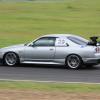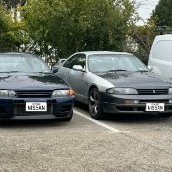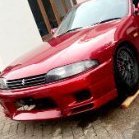Announcements
-
Similar Content
-
Latest Posts
-
Heh. Just rev it to 7800 and look for signs of valve float in the dyno plot.
-
More likely ceramic, but yes, possibly metal. Another factor is that street legal (in Japan) aftermarket exhausts have to meet some noise rules that generally means that a 3" exhaust will likely have a 2 or 2.5" restriction somewhere inside it. If the exhaust has a JASMA tag on it, and hasn't had that restriction found and removed, then, the course of action is obvious.
-
By Dose Pipe Sutututu · Posted
I even asked ChatGPT 4 for you The RPM limit for an RB25DET head with hydraulic lifters, 80lb valve springs, and new valve guides typically falls around 7,000 to 7,500 RPM. Here are some key points to consider: 1. **Hydraulic Lifters**: Hydraulic lifters are generally more limited in high-RPM performance compared to solid lifters due to potential issues with lifter pump-up, which can cause valve float. This often caps the RPM limit around 7,000 to 7,500 RPM. 2. **Valve Springs**: The 80lb valve springs are an upgrade over stock and provide better control at higher RPMs, but they are still somewhat constrained by the limitations of the hydraulic lifters. 3. **Valve Guides**: New valve guides can improve the stability and longevity of the valve train, allowing it to handle higher RPMs more reliably, but they do not significantly raise the RPM limit imposed by the hydraulic lifters. In summary, while the 80lb valve springs and new valve guides enhance the performance and reliability of the head, the use of hydraulic lifters is the main limiting factor, keeping the safe RPM ceiling in the 7,000 to 7,500 range. For higher RPM capabilities, converting to solid lifters would be necessary, along with further upgrades to the valve train.
-








Recommended Posts
Create an account or sign in to comment
You need to be a member in order to leave a comment
Create an account
Sign up for a new account in our community. It's easy!
Register a new accountSign in
Already have an account? Sign in here.
Sign In Now